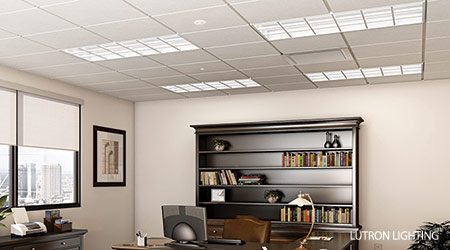
5 Ways to Avoid Flicker in LED Lighting Installations
July 20, 2016
“Flicker” is sometimes used as a catchall term for light modulation problems associated with LED lighting, but a more accurate term is “Temporal Light Artifacts”, or “TLA”. TLA are undesirable changes in visible perception caused by light modulation. Depending on the situation and the person in the lighted space, these modulations can be very disturbing to occupants.
Some types of TLA are visually apparent in a static environment, and this is known as flicker. Flicker can be periodic, or intermittent and random. Other types of TLA, such as phantom arrays and stroboscopic effects, are only visible if the observer or an object in the space is moving. These forms of TLA can cause visual “stripes” or a stop-motion effect. The effects of TLA can vary widely depending on the observer and the application.
With respect to general lighting, significant negative effects — ranging from mild annoyance and eyestrain, to headaches and visual or cognitive impairment, to catastrophic photosensitive epilepsy — can be attributed to TLA. In addition to these human perception concerns, TLA can also cause interference with optical equipment such as cameras and computer vision systems (e.g., barcode readers).
All these negative effects can contribute to employee discomfort, complaints, and ultimately a loss in workplace productivity. NEMA, the Department of Energy, and other organizations are working to develop recommendations, guidelines, and standards to better measure and quantify TLA. Until these are finalized and widely adopted, here are five things you need to know about TLA in your facilities.
1. LED technology does not inherently cause flicker. Some light sources, notably incandescent, have intrinsic “filtering” properties that mask the modulation LEDs may exhibit. LED light sources may be more likely to show flicker because they very accurately reflect the quality and stability of their input power. This makes the quality of the power delivered by the driver a significant factor in the TLA manifested in the end solution.
2. Flicker can be traced to the performance of the driver — so choose a high-quality driver. First and foremost, keep in mind that the LED driver plays a very significant role in delivering flicker-free, high-quality dimming performance, and simpler drivers are more prone to flicker. Less expensive, less complex drivers generally have fewer filtering components and use analog instead of digital circuitry, making them more prone to undesirable modulation in their output and to external electrical noise sources, which can manifest as flicker.
3. Digital control protocols offer greater assurance of success. Use digital controls rather than analog whenever possible. Digital controls are less prone to noise and external interference, and therefore less likely to result in interference-induced TLA. Large-scale installations of LEDs, especially in commercial spaces, often demonstrate the weakness of existing analog control technologies such as phase control and 0-10V. These technologies are not only prone to compatibility problems and interference, but they don’t deliver the flexibility, features, and benefits that many building managers are expecting from modern lighting designs.
4. Be wary of existing metrics – TLA is difficult to objectively measure and quantify. There is not currently an industry-agreed-upon method for measuring flicker that completely captures all the aspects of TLA. Furthermore, different applications may have different requirements for how much TLA is allowable. Simply citing an inadequate metric (such as Flicker Index or Percent Flicker) or seeing the words “flicker free!” on a datasheet won’t assure you that you’re going to be satisfied with the end result.
5. Make sure system components have been tested to work together. There are thousands of bulbs and fixtures on the market, and they are not designed to a single standard. Even those that claim compatibility with a standard (such as 0-10V) don’t offer a guarantee of compatibility or dimming performance with a particular control. Work with experienced fixture, driver, and control manufacturers with proven success in LED installations, and stick to what has worked for you and your customers in the past. When possible, work with a manufacturer that can guarantee compatibility and performance between controls and LED fixtures. Choosing a manufacturer who is committed to testing thousands of driver, fixture, bulb, and control combinations, and makes those results public and easy to access, ultimately helps ensure a successful installation. One such information source is the
Lutron LED Control Center of Excellence, which provides access to a wide variety of reliable information to help you correctly specify, install, and use LEDs.
With proper fixture or bulb selection and attention to detail, LED lighting control systems can deliver the right light for every situation. To ensure you get the “frustration-free”, “flicker-free” LED installation you and your building occupants want, look for high-quality and high-performance LED drivers from manufacturers who are committed to helping you design, install, and support the lighting control solution you need.
This Quick Read was written by Ethan Biery, LED engineering leader for Lutron Electronics, and submitted by Naomi Millán, senior editor of Building Operating Management.
For more strategies for successful LED lighting installations, check out https://www.facilitiesnet.com/14977bom
Next
Read next on FacilitiesNet










